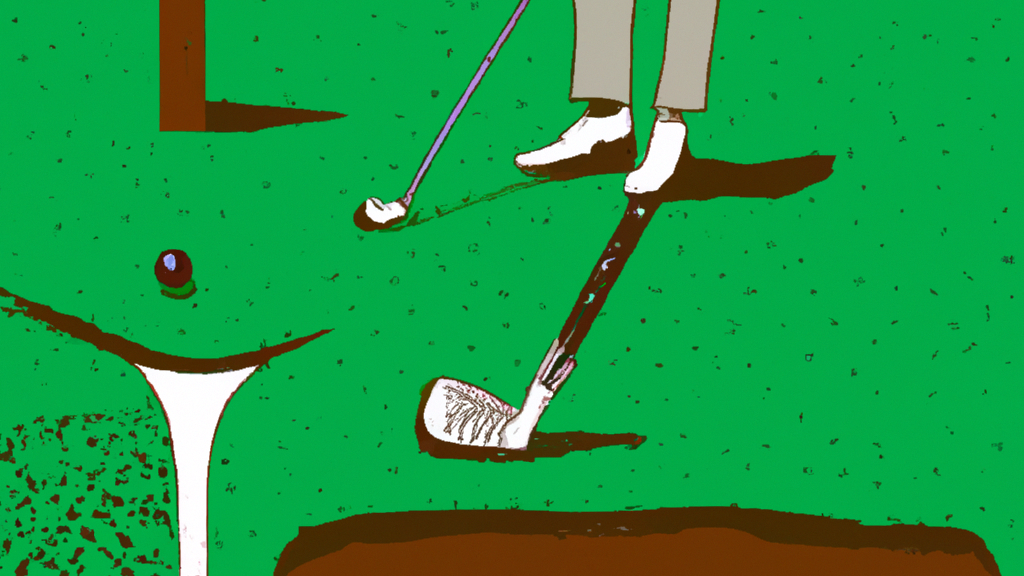THE BENEFITS OF ARTIFICIAL TURF IN GOLF COURSE MANAGEMENT
Golf course management is a complex and challenging task that requires a lot of time, effort, and resources. One of the most significant challenges that golf course managers face is maintaining the quality of the turf. Natural grass requires a lot of maintenance, including watering, mowing, fertilizing, and pest control, which can be expensive and time-consuming. However, with the advent of artificial turf, golf course management has become more manageable and cost-effective. In this blog post, we will explore the benefits of artificial turf in golf course management, including reduced maintenance costs, improved playability, and increased durability.
Whether you are a golf enthusiast, a country club member, or a professional golfer, this article will provide you with valuable insights into how artificial turf can enhance your golfing experience. So, let’s dive in and discover the advantages of artificial turf in golf course management.

THE BENEFITS OF ARTIFICIAL TURF IN GOLF COURSE MANAGEMENT
Golf courses are known for their lush green grass, but maintaining that grass can be a challenge. Golf course management is a complex task that requires a lot of time, effort, and money. One of the biggest challenges in golf course management is maintaining the turf. Natural grass requires a lot of maintenance, including watering, fertilizing, mowing, and pest control. However, there is an alternative to natural grass that is gaining popularity in the golf industry – artificial turf.
Artificial turf has come a long way since its inception in the 1960s. Today, it is a popular choice for many sports fields, including golf courses. Artificial turf is made of synthetic fibers that are designed to look and feel like natural grass. It is durable, low-maintenance, and can withstand heavy foot traffic. In this article, we will explore the benefits of artificial turf in golf course management.
1. Low Maintenance
One of the biggest advantages of artificial turf is that it requires very little maintenance. Unlike natural grass, artificial turf does not need to be watered, fertilized, or mowed. This means that golf course managers can save a lot of time and money on maintenance costs. Artificial turf is also resistant to pests and diseases, which means that there is no need for pesticides or herbicides.
2. Consistent Playing Surface
Another benefit of artificial turf is that it provides a consistent playing surface. Natural grass can be affected by weather conditions, such as rain or drought, which can make the playing surface uneven. Artificial turf, on the other hand, is not affected by weather conditions and provides a consistent playing surface year-round. This means that golfers can enjoy a consistent playing experience regardless of the weather.
3. Durability
Artificial turf is also more durable than natural grass. It can withstand heavy foot traffic and does not wear down as quickly as natural grass. This means that golf course managers do not need to replace the turf as often, which can save a lot of money in the long run.
4. Environmental Benefits
Artificial turf also has environmental benefits. Natural grass requires a lot of water to maintain, which can be a strain on local water resources. Artificial turf, on the other hand, does not require any water, which means that it can help conserve water. Additionally, artificial turf does not require pesticides or herbicides, which can be harmful to the environment.
5. Cost Savings
Finally, artificial turf can save golf course managers a lot of money. While the initial cost of installing artificial turf may be higher than natural grass, the long-term cost savings can be significant. Artificial turf requires very little maintenance, which means that golf course managers can save money on labor and maintenance costs. Additionally, artificial turf is more durable than natural grass, which means that it does not need to be replaced as often.
In conclusion, artificial turf is a great option for golf course management. It is low-maintenance, provides a consistent playing surface, is durable, has environmental benefits, and can save golf course managers a lot of money. While natural grass will always be a classic choice for golf courses, artificial turf is a viable alternative that should be considered by golf course managers.

- Do golf courses really can win with synthetic turf? – Golf Business …
Jun 22, 2017 … the Senior Managing Director of Public Services for the United States Golf Association gave an interview to my guest writer Rich O’Brien about … - Synthetic turf | Sports field management
Durable and low maintenance. Provides environmental benefits in terms of water saving and reduced maintenance. Any drawbacks or issues with synthetic fields? - Artificial Turf vs. Real Grass Putting Greens: Buyer’s Guide
Aug 10, 2022 … Artificial grass nearly always wins that argument. It’s even endorsed by several PGA golf pros and golf course turf managers. - Artificial/Synthetic vs. Real Turf – What Should I Use? Introduction
Oct 5, 2011 … I will also discuss various types of artificial turf and … managing a huge area of grass like a golf course or pasture which will be used … - Turf & Golf Course Management | Anoka Technical College
The Turf and Golf Course Management degree program helps students develop the technical skills needed to maintain turfgrass environments and the management and … - Sports Fields and Golf Course Turf | Penn State Extension
Find advice on turf maintenance for golf, baseball, soccer, and football fields. Tips for managing putting greens, bentgrass varieties, and green speed. - Golf course maintenance and management guide
If one goes down this path, he should make sure there’s a 100% clear conscience in using synthetic golf greens since, after all, it is not real grass. When … - Artificial Grass for Soccer – Artificial Grass Recyclers
Artificial grass for soccer fields has become the norm due to the benefits the sports turf offers athletic field maintenance management and players. - Artificial turf has come a long way
Aug 20, 2002 … Synthetic turf was installed by Renton-based Tydico Inc. at Curtis High School … road medians and several golf course applications. - Golfer’s Guide to Artificial Grass
Jul 1, 2019 … With an artificial grass putting green installed at your home you … Natural grass golf courses require endless, meticulous maintenance to …
Fun facts about The Benefits of Artificial Turf in Golf Course Management
- The first recorded game of golf was played in Scotland in the 15th century.
- Golf balls were originally made out of wood until the mid-1800s when they began to be made from rubber.
- The Masters Tournament, one of golf’s four major championships, has been held annually at Augusta National Golf Club since 1934.
- Professional golfer Tiger Woods has won a total of 82 PGA Tour events, tying him with Sam Snead for the most wins in history.
- In addition to physical skill and technique, mental toughness is also crucial for success in golf due to its individual nature and long periods between shots.
- Many country clubs offer amenities beyond just golfing such as tennis courts, swimming pools, and fine dining options for members and guests alike.
- Caddies have been a part of professional golf since its early days but are now less common due to advancements in technology such as GPS devices that can provide distance measurements on course layouts





